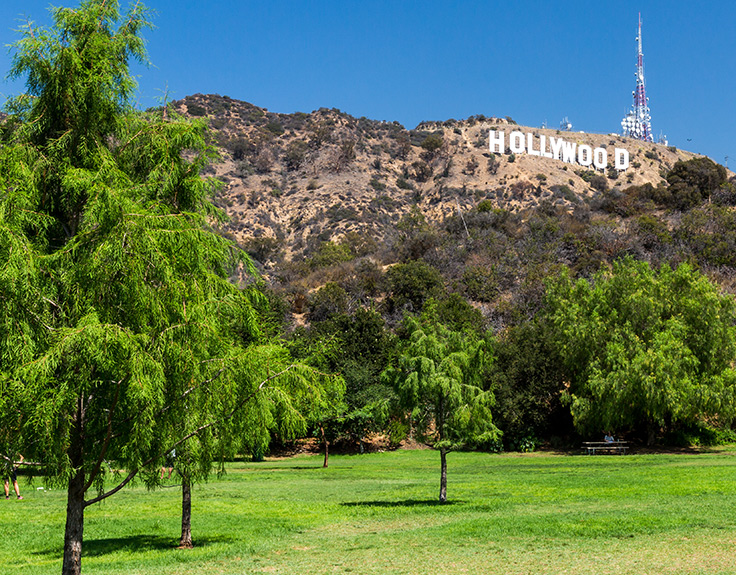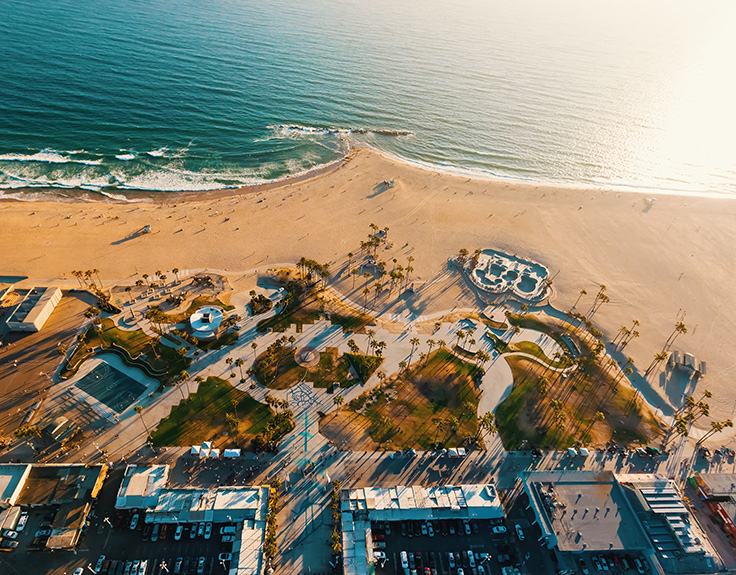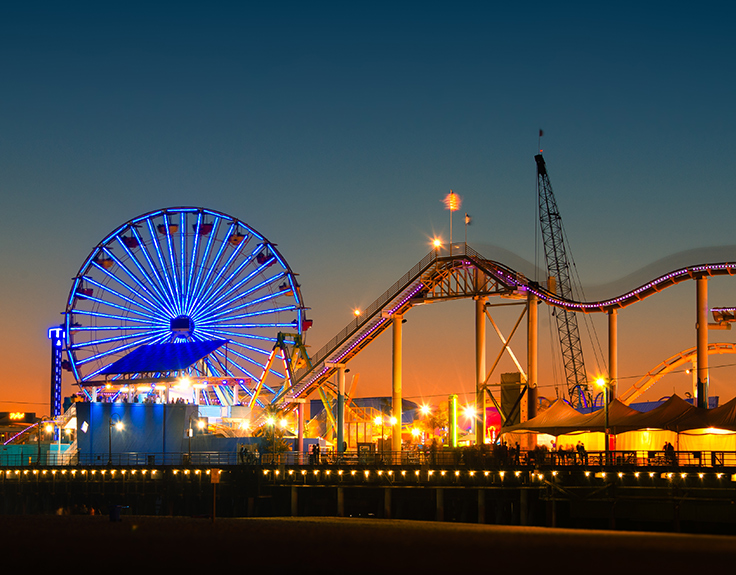The campus
The Getty Center is known for its impressive architecture, pristine gardens, and views overlooking the City of Los Angeles. Sat atop a hill, a cable-pulled hover train funicular is your only way in, an enjoyable experience in itself.
The campus houses the Getty Museum and other programs of the Getty Trust. The museum attracts a staggering 1.8 million visitors every year, and features pre-20th-century European paintings, drawings, sculptures, decorative arts and much more. The Vincent Van Gogh painting Irises is the piece not to be missed.
The original museum
The Getty Museum was first housed in the home of J. Paul Getty. When the collection grew he built a museum wing to accommodate. This was soon again outgrown and so he built a replica Italian villa on his land. After Getty’s death in 1976, the Trust management found a fitting location for the museum, where it stands today, more accessible to the City of Angeles. 24 acres in the Santa Monica Mountains, 900 feet above sea level. On a clear day you’re spoilt with views of the Los Angeles skyline, the San Bernardino Mountains, the Pacific Ocean and San Gabriel Mountains.
The architecture
Nature and culture inspired architect Richard Meier when designing the Getty Centre. The campus is covered in Italian travertine, with a central arrival plaza acting as the hub. The beige stone captures light along with plenty of glass elements. Sunken gardens, terraces and open floor plans all allow for fluid movement between indoor and outdoor spaces. The architecture alone is worth a moment to take in.
Other interesting facts about Getty Center in Los Angeles
- The Getty Center hires a herd of goats each spring to help clear brush and reduce fire risk on the hillside
- The research library at the Getty Center houses over 1 million volumes among its general collections, reference and rare materials, periodicals and auction catalogs
- Box 9, folder 22 of the archive of American sculptor Malvina Hoffmann contains a lock of Auguste Rodin’s hair






